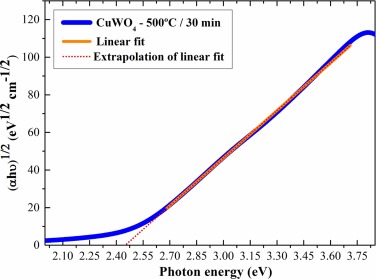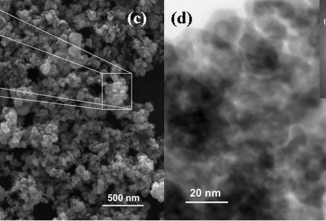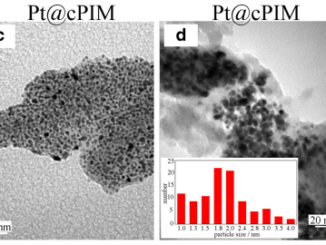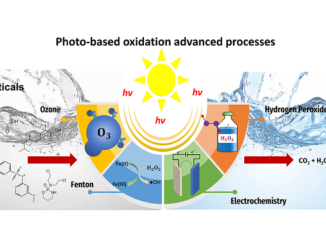
Facile preparation of CuWO4 porous films and their photoelectrochemical properties
Abstract: In this study, the structure and photoelectrochemical properties of CuWO4 porous films synthesized by a co-precipitation method followed by a hydrothermal treatment were investigated. The film was deposited on fluorine-doped tin oxide (FTO)-conducting glass, from a suspension containing polyethylene glycol, and heat-treated at 500 °C for 30 min. X-ray diffraction patterns, the Rietveld refinement data, and the micro-Raman spectrum showed that the CuWO4 film has a triclinic structure. The optical band gap energy of the film was estimated to be 2.45 eV by the Tauc plot. Field emission scanning electron microcopy images of the films indicated that they are about 4.0 ± 0.5 μm thick. The photoelectrochemical properties of the film were investigated in a Na2SO4 aqueous solution, in the absence of light and under polychromatic irradiation. The CuWO4 film exhibited photoelectrochemical behavior of a n-type semiconductor, with a negative photopotential and an anodic photocurrent density of 68 μA cm−2 at 0.73 V vs. Ag/AgCl (1.23 V vs. RHE). The n-type photoelectrochemical behavior was confirmed by a chronoamperometry measurement biased condition at + 0.7 V, at different pH values. From these studies, it was noted that when the pH values increased from 3 to 11, the photocurrent density increased about 9 times. Also, the flat band potential (Efb) of the semiconductor was estimated by the Butler-Gärtner model at + 0.34 V, which was utilized to calculate the conduction band edge. The studies presented here reveal that the CuWO4 porous film is a promising candidate to be applied as a photoanode in photocatalytic processes under irradiation by visible light.
Author(s): Lima, A. E. B.; Costa, M. J. S.; Santos, R. S.; et al.
Electrochimica Acta
Volume: 256 Pages: 139-145 Published: 2017
DOI: https://doi.org/10.1016/j.electacta.2017.10.010
PDF: Facile preparation of CuWO4 porous films and their photoelectrochemical properties




